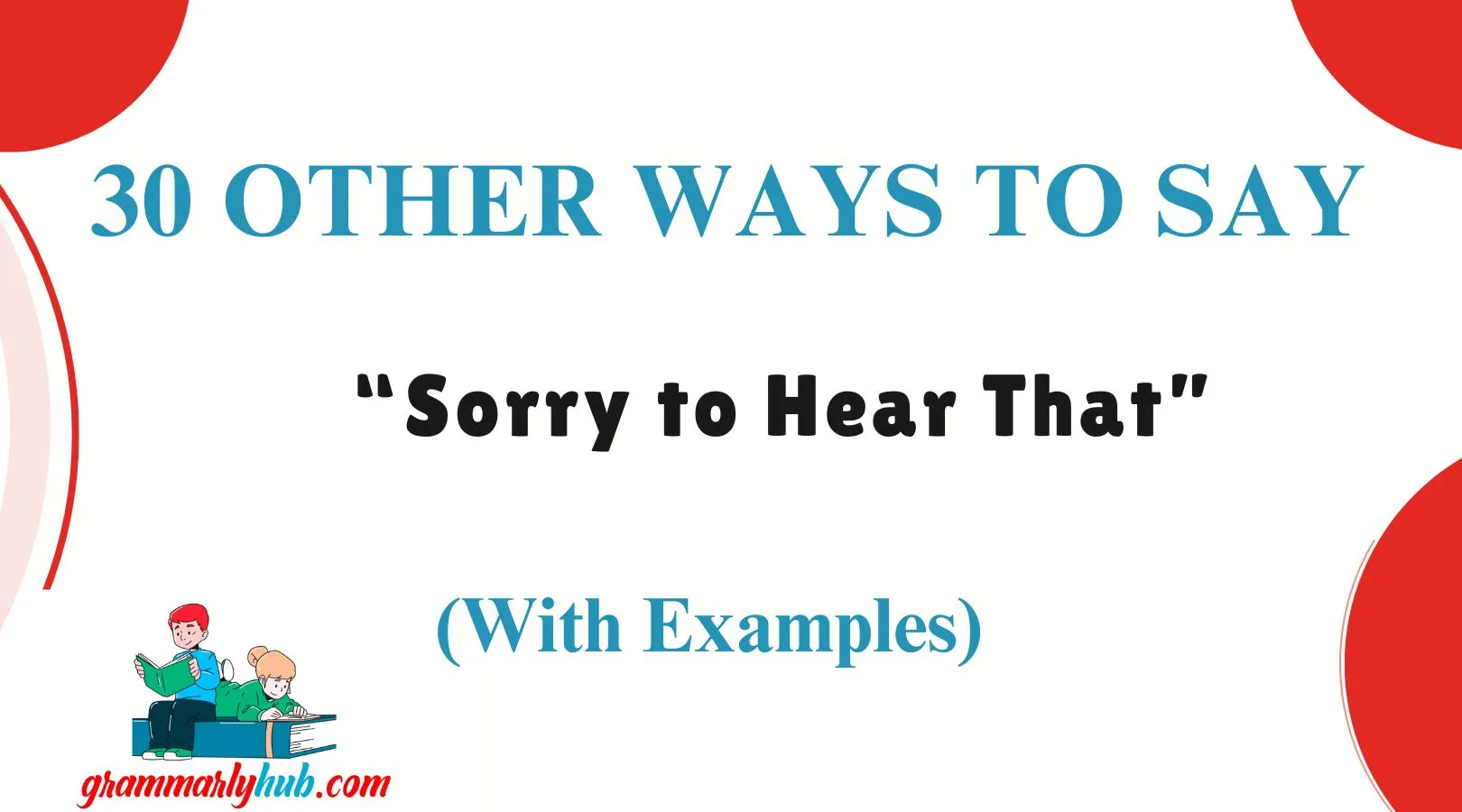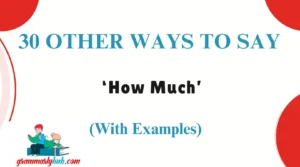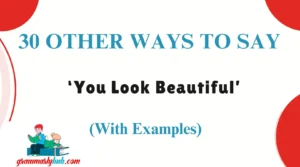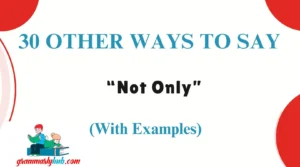When someone shares sad or unfortunate news, it’s natural to want to respond with empathy. While saying “sorry to hear that” is common and sincere, using other ways to say “sorry to hear that” can help your message feel more personal, thoughtful, and emotionally attuned. Whether you’re speaking to a friend, colleague, or acquaintance, having a variety of expressions allows you to respond with kindness without sounding repetitive or impersonal.
In this guide, we’ll explore different ways to offer sympathy and support, tailored for different tones—professional, casual, or heartfelt. From “That must be tough” to “My heart goes out to you,” these alternatives can strengthen your emotional connection and show genuine care. So if you’re looking for compassionate alternatives to “sorry to hear that,” you’re in the right place. Let’s find the words that truly resonate.
What Does “Sorry to Hear That” Mean?
“Sorry to hear that” is a common expression used to show empathy or sympathy when someone shares disappointing, sad, or unfortunate news. It doesn’t mean you’re taking responsibility; it simply communicates that you care.
When to Use “Sorry to Hear That”
Use “Sorry to hear that” when someone:
- Shares bad news (e.g., illness, a loss, disappointment)
- Expresses sadness, stress, or difficulty
- Is going through a tough or emotional situation
This phrase works well in both personal and professional contexts, though tone matters.
Is It Polite/Professional to Say “Sorry to Hear That”?
Yes, it is both polite and professional to say “Sorry to hear that”—especially when someone shares bad news, a personal loss, or a difficult situation. It’s a compassionate and respectful phrase that acknowledges the other person’s experience without overstepping boundaries. In professional settings, it strikes the right balance between empathy and formality, making it a safe and considerate choice.
However, context matters. For example:
- In a business email, you might say, “I’m sorry to hear about the delay. Let me know how I can help.”
- In a personal conversation, you might say, “I’m really sorry to hear that. Are you okay?”
That said, using alternatives to ‘sorry to hear that’ can add variety and show more tailored empathy, especially if the situation is ongoing or deeply emotional.
Pros and Cons
Pros:
- Widely understood
- Quick and respectful
- Appropriate in most settings
Cons:
- Can feel impersonal or overused
- Lacks emotional depth in deeper situations
- May come across as dismissive if not followed up
Synonyms For “Sorry to Hear That”
- I’m sorry to hear that
- That’s really unfortunate
- I feel for you
- My heart goes out to you
- That sounds so difficult
- I’m truly sorry
- I’m sorry you’re going through this
- Sending you my condolences
- That must be hard
- I’m saddened to hear that
- I’m so sorry you’re dealing with this
- That breaks my heart
- I’m here if you want to talk
- That’s really tough—I’m sorry
- I’m sending strength your way
- Please take all the time you need
- I understand this must be overwhelming
- Wishing you comfort during this time
- I hate that you’re going through this
- You’re not alone in this
- That’s really upsetting—I wish things were different
- I’m holding space for you
- I’m just a message away
- You’re going through so much—be kind to yourself
- I wish there was more I could do
- That sounds heartbreaking
- I know this is a lot to take in
- This must be weighing on you
- Please don’t hesitate to reach out
- I’m keeping you in my thoughts
1. That must be really hard
Definition: Acknowledges the emotional weight of the situation.
Explanation: Offers empathy without judgment.
Example: “That must be really hard. I’m here if you need to talk.”
Worst Use: When discussing minor issues.
Tone: Deeply empathetic, sincere.
2. I’m here for you
Definition: A supportive, open-ended phrase of comfort.
Explanation: Focuses on presence, not just reaction.
Example: “I’m here for you—whatever you need.”
Worst Use: When you’re unable or unwilling to offer support.
Tone: Compassionate, grounding.
3. That’s awful—I’m so sorry
Definition: Intensifies the sympathy for greater impact.
Explanation: A stronger version of “sorry to hear that.”
Example: “That’s awful—I’m so sorry you’re going through this.”
Worst Use: For light disappointments.
Tone: Deeply sympathetic.
4. That sounds incredibly difficult
Definition: Validates their emotional struggle.
Explanation: Expresses recognition of how hard something is.
Example: “That sounds incredibly difficult. How are you holding up?”
Worst Use: When the news is positive.
Tone: Respectful, thoughtful.
5. I wish I had the right words
Definition: Honest and emotionally aware.
Explanation: Admits that words feel insufficient.
Example: “I wish I had the right words, but I’m thinking of you.”
Worst Use: When you should offer practical help instead.
Tone: Vulnerable, heartfelt.
6. You’re in my thoughts
Definition: Classic message of care and concern.
Explanation: Offers emotional support from afar.
Example: “You’re in my thoughts. Let me know if there’s anything I can do.”
Worst Use: May feel impersonal without follow-up.
Tone: Gentle, appropriate for any setting.
7. I’m thinking of you
Definition: Similar to #6, with a slightly warmer tone.
Explanation: Lets the other person know they’re not alone.
Example: “I’m thinking of you and hoping things get better soon.”
Worst Use: Avoid using alone in very serious scenarios.
Tone: Soft, caring.
8. That’s really upsetting to hear
Definition: Stronger emotional response.
Explanation: Expresses that their pain impacts you too.
Example: “That’s really upsetting to hear. I’m so sorry.”
Worst Use: When the situation requires composure or formality.
Tone: Honest, emotional.
9. I can’t imagine what you’re going through
Definition: Recognizes the uniqueness of their pain.
Explanation: Empathetic without making assumptions.
Example: “I can’t imagine what you’re going through, but I’m here for you.”
Worst Use: Avoid using with very close friends—it may seem distant.
Tone: Compassionate, respectful.
10. Sending you love
Definition: Simple, heartfelt message of care.
Explanation: Especially effective in personal contexts.
Example: “Sending you love and strength during this tough time.”
Worst Use: In professional settings unless relationship allows.
Tone: Warm, supportive.
11. I’m so sorry you’re dealing with this
Definition: A compassionate acknowledgment of someone’s hardship.
Explanation: Shows deep sympathy for what they’re going through.
Example: “I’m so sorry you’re dealing with this—it’s completely unfair.”
Worst Use: When you’re unfamiliar with the person; may seem overly personal.
Tone: Gentle, personal, empathetic.
12. That breaks my heart
Definition: A heartfelt expression of sorrow.
Explanation: Shows emotional impact and connection.
Example: “That breaks my heart. You don’t deserve to go through this.”
Worst Use: Formal or professional contexts.
Tone: Emotional, intimate.
13. I’m here if you want to talk
Definition: Invitation to open up.
Explanation: Offers emotional availability without pressure.
Example: “I’m here if you want to talk or just sit in silence.”
Worst Use: If you’re not actually available or willing to talk.
Tone: Supportive, reassuring.
14. That’s really tough—I’m sorry
Definition: Combines recognition and sympathy.
Explanation: Simple yet warm response to painful news.
Example: “That’s really tough—I’m sorry you’re going through it.”
Worst Use: If overused, it can sound generic.
Tone: Neutral to warm, depending on context.
15. I’m sending strength your way
Definition: Encouraging and uplifting message.
Explanation: Combines care with empowerment.
Example: “I’m sending strength your way—hang in there.”
Worst Use: In very serious or tragic situations, may feel light.
Tone: Positive, supportive.
16. Please take all the time you need
Definition: Empowers the other person to prioritize healing.
Explanation: A great response when someone needs space.
Example: “Please take all the time you need—we’ll be here when you’re ready.”
Worst Use: If a deadline or time constraint is involved.
Tone: Respectful, accommodating.
17. I understand this must be overwhelming
Definition: Acknowledges emotional weight.
Explanation: Helps validate the other person’s feelings.
Example: “I understand this must be overwhelming. Let me help however I can.”
Worst Use: Avoid if you truly don’t understand their experience.
Tone: Compassionate, understanding.
18. Wishing you comfort during this time
Definition: A gentle, formal message of care.
Explanation: Often used in sympathy cards or formal settings.
Example: “Wishing you peace and comfort during this difficult time.”
Worst Use: In casual or very close personal relationships.
Tone: Formal, respectful.
19. I hate that you’re going through this
Definition: Honest expression of frustration for their pain.
Explanation: Strong and supportive if the relationship allows.
Example: “I hate that you’re going through this. I’m always here for you.”
Worst Use: In formal conversations—it may seem too emotional.
Tone: Emotional, candid.
20. You’re not alone in this
Definition: Reassurance that they have support.
Explanation: Helps someone feel less isolated in hard times.
Example: “You’re not alone in this. We’re all behind you.”
Worst Use: When you’re unable to actually offer support.
Tone: Reassuring, caring.
21. That’s really upsetting—I wish things were different
Definition: Honest, empathetic reflection.
Explanation: Shows alignment with their pain and wishes.
Example: “That’s really upsetting—I wish things were different for you.”
Worst Use: If you’re unsure of the situation or its gravity.
Tone: Thoughtful, gentle.
22. I’m holding space for you
Definition: A calming and inclusive emotional offering.
Explanation: Communicates quiet, present support.
Example: “I’m holding space for you—take whatever time you need.”
Worst Use: In very literal, businesslike conversations.
Tone: Mindful, supportive.
23. I’m just a message away
Definition: Invitation to connect any time.
Explanation: Shows availability and concern.
Example: “I’m just a message away if you ever need to vent.”
Worst Use: If you don’t actually intend to respond quickly.
Tone: Friendly, encouraging.
24. You’re going through so much—be kind to yourself
Definition: Encouragement to prioritize self-care.
Explanation: Balances empathy with nurturing advice.
Example: “You’re going through so much—please be kind to yourself.”
Worst Use: May sound like a platitude if not said sincerely.
Tone: Caring, nurturing
25. I wish there was more I could do
Definition: Honest and heartfelt.
Explanation: Expresses your desire to help even if you can’t fix the situation.
Example: “I wish there was more I could do. I’m thinking of you.”
Worst Use: If followed by inaction.
Tone: Genuine, caring.
26. That sounds heartbreaking
Definition: Strong emotional response.
Explanation: Shows deep sympathy and understanding.
Example: “That sounds heartbreaking—I hope you find comfort soon.”
Worst Use: In settings where composure is expected.
Tone: Raw, expressive.
27. I know this is a lot to take in
Definition: Recognizes the emotional overload.
Explanation: Helps validate shock or emotional exhaustion.
Example: “I know this is a lot to take in. Let me know how I can support you.”
Worst Use: If the situation is minor.
Tone: Calm, validating.
28. This must be weighing on you
Definition: Recognizes emotional burden.
Explanation: Shows understanding and care.
Example: “This must be weighing on you—I hope you can find a little rest.”
Worst Use: If you’re unaware of full context.
Tone: Gentle, compassionate.
29. Please don’t hesitate to reach out
Definition: An open invitation to connect.
Explanation: Offers help without pressure.
Example: “Please don’t hesitate to reach out anytime.”
Worst Use: If you’re unavailable or not responsive.
Tone: Supportive, professional or personal.
30. I’m keeping you in my thoughts
Definition: A classic, calm way to show care.
Explanation: Widely used to offer emotional solidarity.
Example: “I’m keeping you in my thoughts during this time.”
Worst Use: When the relationship calls for deeper emotional support.
Tone: Neutral, appropriate for most settings.
Conclusion: Finding the Right Words to Show You Care
When someone shares painful news, your words can bring comfort—or they can feel flat and forgettable. While “Sorry to hear that” is a respectful and valid response, sometimes it’s worth pausing to say something more personal, heartfelt, or tailored to the situation.
Whether you’re consoling a colleague, supporting a friend, or responding with empathy in a written message, these 30 thoughtful alternatives give you a more compassionate way to connect. The key is sincerity. Choose words that match your relationship, the tone of the moment, and your ability to support them.
Because at the end of the day, it’s not about saying something perfect—it’s about making sure the other person feels seen, heard, and not alone.
FAQs About Saying “Sorry to Hear That”
Q1: Is it okay to say “Sorry to hear that” in a professional setting?
Yes. It’s completely acceptable in most professional environments. Just be mindful of your tone and consider following up with a specific offer of support, especially if someone’s struggling with something serious.
Q2: What can I say instead of “Sorry to hear that” to a coworker?
Try saying:
- “That must be difficult—let me know how I can support you.”
- “Please take all the time you need.”
- “I’m thinking of you—let me know if there’s anything I can do.”
These phrases are professional while still being warm and supportive.
Q3: What if I don’t know the person well—should I still say something?
Yes, even a simple, kind message can go a long way. Something like “I’m sorry you’re going through this” or “Wishing you comfort during this time” is gentle and appropriate without overstepping boundaries.
Q4: How can I show support beyond just words?
Great question. You can offer help with a task, send a thoughtful message, share a meal, or simply check in later. Actions, even small ones, make your words of sympathy more meaningful.
Q5: Can these alternatives be used in text or email?
Absolutely. Most of these alternatives work well in written messages, especially when paired with sincere tone and intention. Just be sure they match your relationship with the person and the situation’s seriousness.

Emma Brooke is the voice behind Grammarly Hub, where grammar meets clarity. With a deep passion for the written word, Emma helps readers navigate the tricky waters of English grammar, writing tips, and effective communication.













